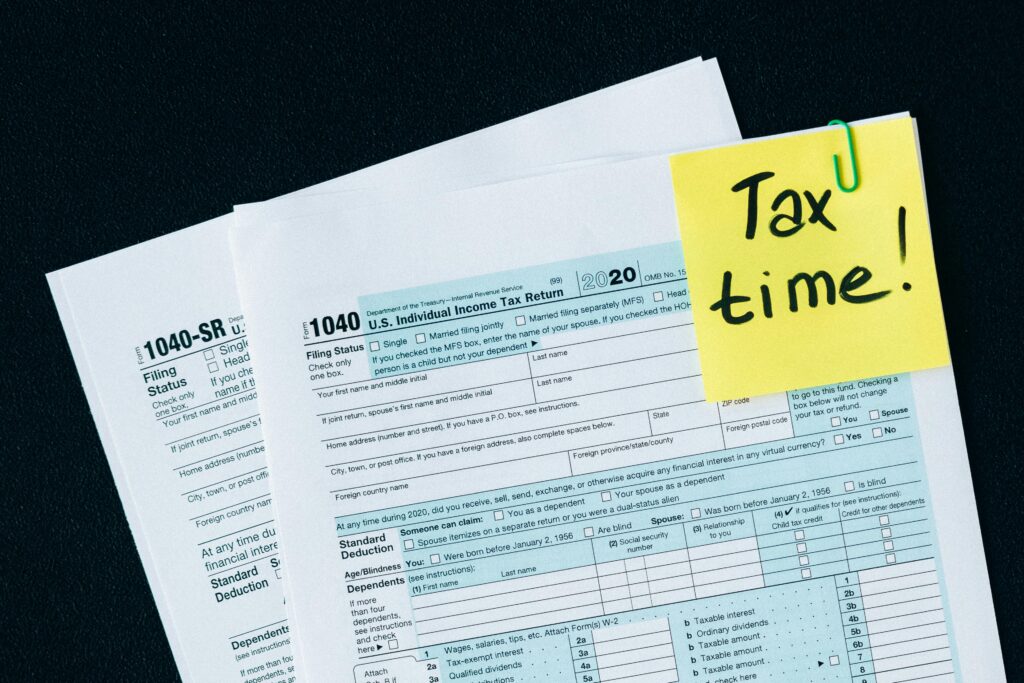
Tackling taxes for the first time can feel like attempting a foreign language. Forms, deductions, W-2s – it is easy to get overwhelmed. Before you sit down at the kitchen table with a pile of documents, take the time to understand the process. With the right tools and guidance, it doesn’t have to be daunting. Let’s walk through the process step-by-step so you can file confidently and even uncover opportunities to save.
In this post, we’ll break down the essentials of filing taxes for the first time, focusing on traditional employment scenarios like full-time or part-time jobs. For those freelancing, contracting, or working in the gig economy, we’ve included a dedicated section to address your unique needs. By the end, you’ll not only know how to file your taxes but also understand the resources available to make the process smoother. Let’s get started!
Understanding the Basics: Forms, Deadlines, and Filing Status
When you’re traditionally employed, your employer will likely provide a W-2 form by January 31st. This document summarizes your earnings and the taxes withheld during the previous year. Your first step is to gather this form along with any other financial documents, like 1098-T forms if you paid student loan interest, or receipts for deductible expenses.
Next, determine your filing status. Most single young professionals will file as “Single,” but if you’re married or supporting dependents, other options might apply. The IRS’s Interactive Tax Assistant is a helpful tool for determining the correct status.
Finally, note the filing deadline: typically April 15th. If you need more time, you can file for an extension, but remember that an extension only grants extra time to file, not to pay taxes owed. Make sure you pay any tax you owe by the April filing date.
Traditional Employment: Filing Made Simple
For traditional employees, filing taxes can be straightforward. Once you have your W-2 and any relevant documents, you can use tax software like TurboTax or H&R Block to guide you through the process. These tools ask questions about your income, deductions, and credits, then calculate your tax liability.
Key deductions and credits to look for include:
- Student Loan Interest Deduction: If you’re repaying student loans, you may qualify to deduct up to $2,500 of interest.
- Education Credits: The American Opportunity Credit and Lifetime Learning Credit can help offset education expenses.
- Saver’s Credit: If you contributed to a retirement account, you might qualify for this credit.
Remember to double-check your work before submitting your return. Tax software often includes error-checking features, but it’s wise to review the details yourself.
Alternative Employment Models: Freelancers, Contractors, and Gig Workers
If you’re self-employed or working in the gig economy, your tax obligations differ. You won’t receive a W-2. Instead, clients or platforms may issue 1099-NEC or 1099-K forms summarizing your income. Additionally, you’ll need to track and report all income, even if you don’t receive a 1099 for some jobs.
Here’s what you need to know:
- Self-Employment Taxes: You’re responsible for both employer and employee portions of Social Security and Medicare taxes.
- Quarterly Payments: Unlike traditional employees, taxes aren’t withheld from your paycheck. You must estimate and pay taxes quarterly to avoid penalties.
- Deductible Expenses: Save receipts for business-related costs like equipment, internet, travel, and home office expenses. These can reduce your taxable income.
Consider using accounting software or hiring a tax professional to stay organized. The IRS’s Small Business and Self-Employed Tax Center is a great resource.
Resources for First-Time Filers
Whether you’re filing as a traditional employee or navigating freelance taxes, these resources can help:
- IRS Free File: The IRS offers free software for taxpayers below a certain income threshold. If your AGI is $79,000 or less, you qualify for a free federal tax return. If your income is greater that that amount, you can still use the IRS Free File Fillable Forms, electronic federal tax forms, equivalent to a paper 1040 form.
- MyFreeTaxes: A free service offered by United Way for simple tax situations as part of their commitment to ensuring that you can easily and accurately file your taxes to receive the refunds you deserve. The United Way aims to make taxes free and less complicated in a safe and convenient online experience.
- TurboTax Tax Tools: Turbo Tax offers calculators and guides for tax planning. Your employer may have a partnership with Turbo Tax or there may be an appropriate affiliate partner discount so before signing up, make sure you have any employer discount codes.
Filing your taxes for the first time might feel overwhelming, but with preparation and the right tools, you can tackle it like a pro. Whether you’re traditionally employed, freelancing, or juggling gig work, understanding the basics is key. And remember, if you ever get stuck, there are plenty of resources to guide you every step of the way. Good luck, and here’s to a smooth tax season!

